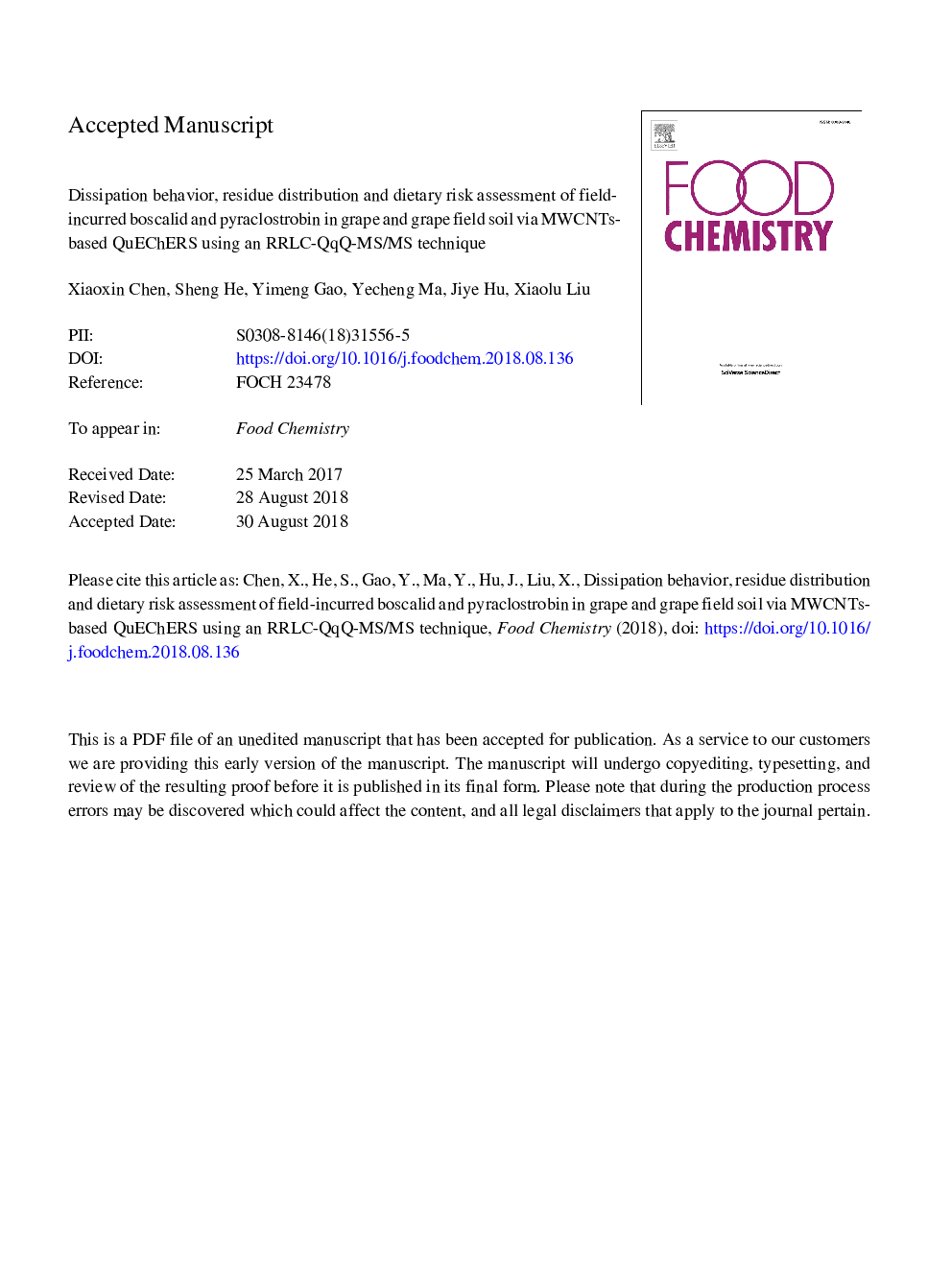| کد مقاله | کد نشریه | سال انتشار | مقاله انگلیسی | نسخه تمام متن |
|---|---|---|---|---|
| 10140763 | 1646046 | 2019 | 29 صفحه PDF | دانلود رایگان |
عنوان انگلیسی مقاله ISI
Dissipation behavior, residue distribution and dietary risk assessment of field-incurred boscalid and pyraclostrobin in grape and grape field soil via MWCNTs-based QuEChERS using an RRLC-QqQ-MS/MS technique
دانلود مقاله + سفارش ترجمه
دانلود مقاله ISI انگلیسی
رایگان برای ایرانیان
کلمات کلیدی
PHISTMRNEDIRRLC-QqQ-MS/MSResidue distributionsupervised trials median residueLOQsMWCNTsMRLsADI - NAMERSDs - RSD هاDietary risk assessment - ارزیابی ریسک رژیم غذاییrelative standard deviations - انحراف استاندارد نسبیBoscalid - بسکلیدMaximum Residue Limits - حداکثر حد مجازAcceptable daily intake - دریافت روزانه قابل قبولGood Agricultural Practices - روش های کشاورزی خوبRisk quotient - ریسک فاکتورGAP - شکافPre-harvest interval - فاصله قبل از برداشتLODs - لد هاLimits of quantification - محدودیت اندازه گیریlimits of detection - محدودیت های تشخیصMulti-walled carbon nanotubes - نانولوله های کربنی چند دیوارهPyraclostrobin - پری کلستروبین
موضوعات مرتبط
مهندسی و علوم پایه
شیمی
شیمی آنالیزی یا شیمی تجزیه
پیش نمایش صفحه اول مقاله

چکیده انگلیسی
A QuEChERS technique employing multi-walled carbon nanotubes was developed and validated for the simultaneous quantitation of boscalid and pyraclostrobin in grape field samples using rapid resolution liquid chromatography triple- quadrupole tandem mass spectrometry. The validated method was successfully applied to determine the levels of residual boscalid and pyraclostrobin in soil and grapes. The dissipation behavior of each fungicide followed first-order kinetics, with a linear correlation coefficient of 0.995-0.998 at 95% confidence. The highest levels of boscalid and pyraclostrobin in grape, with a pre-harvest interval of 14â¯days and doses of 380-570â¯mg a.i.â¯kgâ1 in three or four applications, were 3.99â¯mgâ¯kgâ1 and 0.792â¯mgâ¯kgâ1, respectively. These are below the maximum residue limits for boscalid and pyraclostrobin in grape, as recommended by the Chinese Ministry of Agriculture. Risk quotients (RQs) of these pesticides were evaluated by comparing national estimated daily intake with acceptable daily intake. The results yielded RQs for boscalid and pyraclostrobin in grape of 54% and 31.7%, respectively, which suggest a low health risk to consumers.
ناشر
Database: Elsevier - ScienceDirect (ساینس دایرکت)
Journal: Food Chemistry - Volume 274, 15 February 2019, Pages 291-297
Journal: Food Chemistry - Volume 274, 15 February 2019, Pages 291-297
نویسندگان
Xiaoxin Chen, Sheng He, Yimeng Gao, Yecheng Ma, Jiye Hu, Xiaolu Liu,